Art Fairs
Bogotá Fair ArtBo Is Staying Strong in Its 15th Year, Despite Simmering Tensions in the Region
The fair drew collectors from around the world, but surprisingly few Americans.
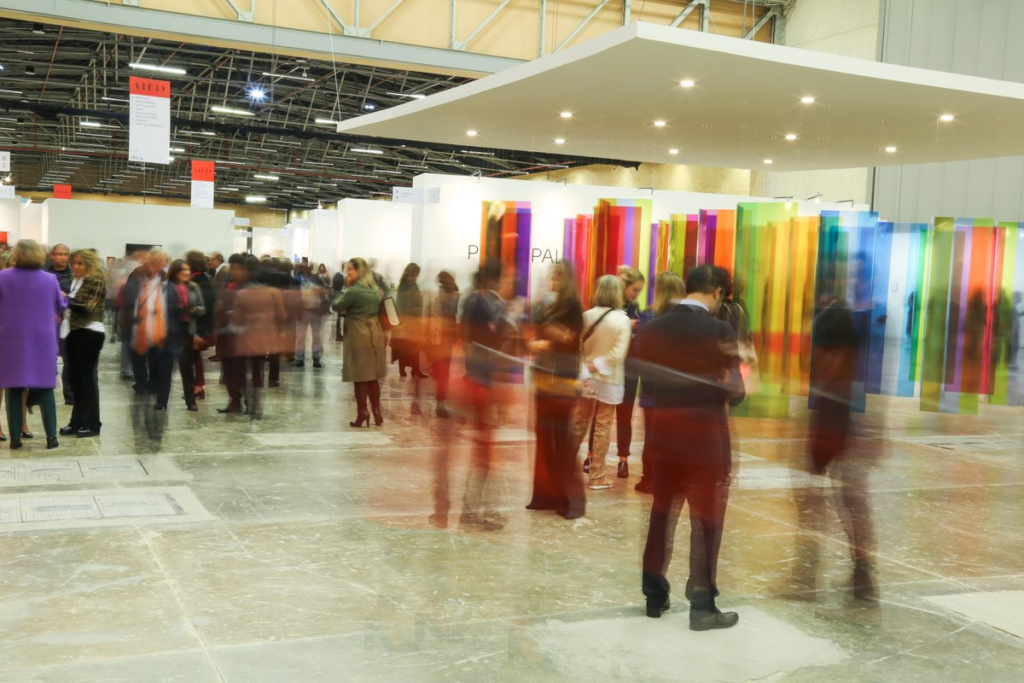
The fair drew collectors from around the world, but surprisingly few Americans.

Brian Boucher

“This is just the kind of thing that sets ArtBo apart,” said Colombian collector Eduardo Salazar, excited to find a video work at the Bogotá art fair by María Teresa Hincapié, a Colombian performance artist who died in 2008 and whom he called “our Marina Abramović.” The piece, Intempestivas (1992), was created in collaboration with artist José Alejandro Restrepo and her son, Santiago Zuluaga, courtesy of Buenos Aires gallery Rolf Art.
Intempestivas is a timely work for the 15th edition of ArtBo, which is open through September 22. Through Restrepo’s images, Zuluaga’s guitar sounds, Hincapié’s physical performance, and a stack of video monitors showing rapidly cycling images, including licking flames, it references political tensions, and is a reminder that the fair is taking place against the backdrop of a possible renewal of violence by members of the guerrilla group Revolutionary Armed Forces of Colombia.
One of the group’s leaders recently released a video proclaiming a return to war against the government, disavowing a peace accord struck three years ago, which mostly brought to an end a war that had lasted a half century and claimed nearly a quarter of a million lives. A remaining armed faction continues to murder government officials throughout the country while trafficking in guns and drugs, and has linked up with other deadly rebel groups.
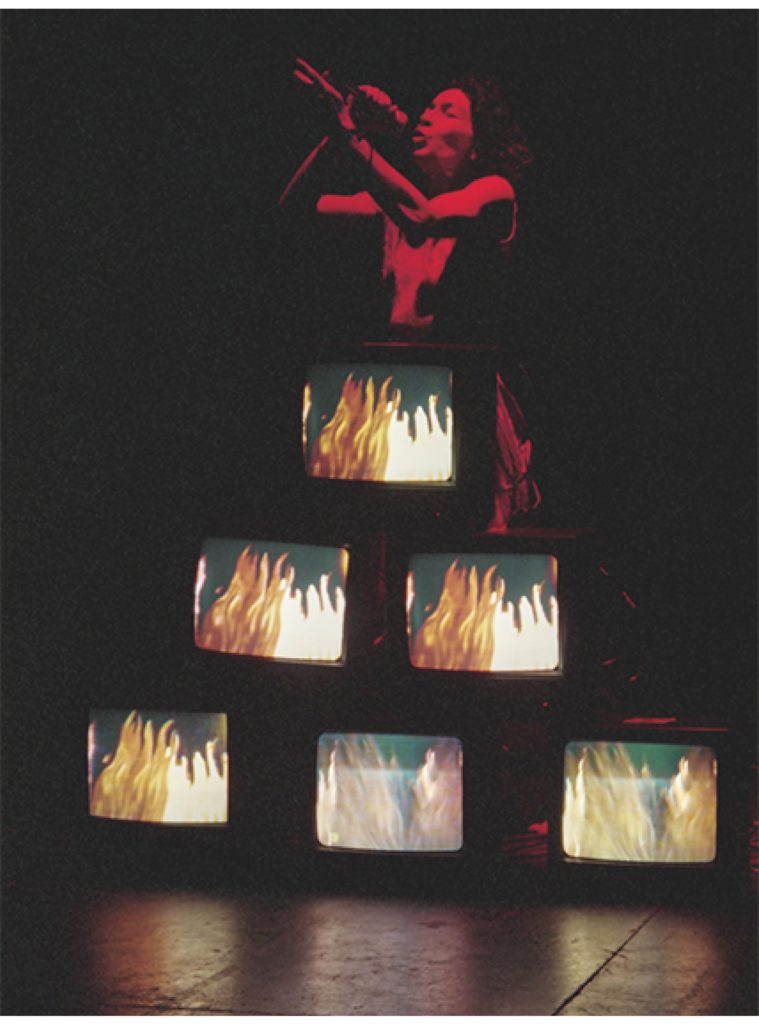
Maria Teresa Hincapié, José Alejandro Restrepo, and Santiago Zuluaga, Intempestivas (1992). Courtesy of Rolf Art.
But in Bogotá, the nation’s high-altitude capital, which at the moment remains untouched by the conflict, the fair launched a lively opening on Wednesday. In attendance were groups from Tate, Ballroom Marfa, and the Museum of Contemporary Art Panama, as well as curators like Inés Katzenstein, director of MoMA’s Research Institute for the Study of Art from Latin America, and the Museum of Fine Art Houston’s Latin American art curator Mari Carmen Ramírez. Former president César Gaviria, whose daughter María Paz Gaviria is the fair’s director, also made an appearance, along with President Iván Duque.
The flow of international visitors came despite the fair having moved its dates from October to September, due both to scheduling conflicts with the venue and to avoid coinciding with elections taking place next month, at which time businesses close early and alcohol isn’t served.
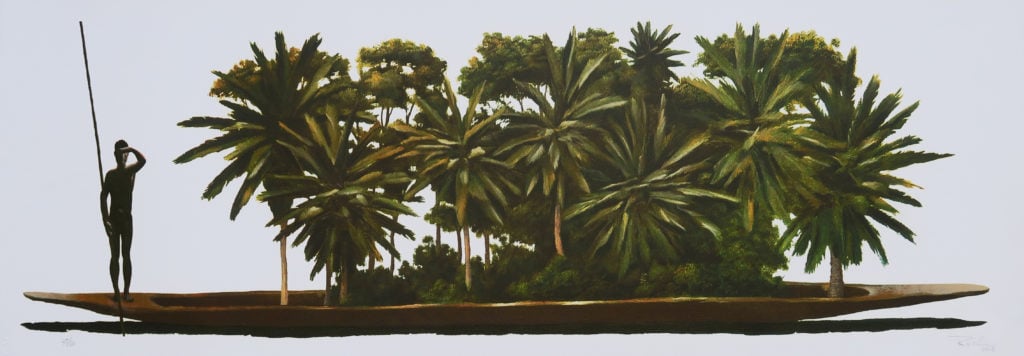
Pedro Ruiz, Displacement #199 (2019). Courtesy of Beatriz Esguerra Art.
The fair’s 76 dealers have brought work that’s priced as low as a few hundred dollars, like the delightful collages by Puerto Rico’s Manuel Mendoza Sánchez, which are available for $700 at San Juan gallery Embajada, to big-ticket secondary-market works, like a painting by Colombia native son Fernando Botero, at Bogotá’s Galería La Cometa for an asking price of $400,000. “Sometimes art fairs get caught in the middle,” Salazar said. “Here, you find great heat with works by the masters, as well as with avant-garde contemporary artists.”
With some exceptions, sales have been a slow burn, but collectors were inspired by the high quality of the work on view. Boston-area collector Julian Fisher compared the fair to a small version of the Spanish fair ARCO Madrid, citing the “incredible array of art from around the Spanish-speaking world,” he said. “What impresses me is the staggering price range, and the technical quality of the works is very good throughout.” Indeed, the fair has extensive representation of galleries from Argentina, Brazil, Colombia, Mexico, and Peru, along with some Europeans. American dealers, on the other hand, have been mostly absent.
Other works also allude to the region’s violence. Bogotá gallery Beatriz Esguerra Arte is showing local artist Pedro Ruiz’s bold, five-foot-long painting Displacement #204 (2019), which shows a man in a loincloth piloting a canoe, surreally transporting a giant tract of lush, green jungle. The piece refers to the forced displacement of millions of Colombians through decades of conflict, a subject that resounds with a number of other artists showing at ArtBo.
“Colombia has fantastic art and great stories to tell in terms of politics and geography and in so many ways, and hasn’t quite been discovered,” said Esguerra, who has shown in every edition of the fair to date, during the fair’s VIP preview on Wednesday. By the end of Thursday, she reported having sold two dozen works.
As perhaps suited an event based on international trade—only about half ArtBo’s buyers are Colombian, according to Paz Gaviria—several artists took on commerce itself as a subject in their work.
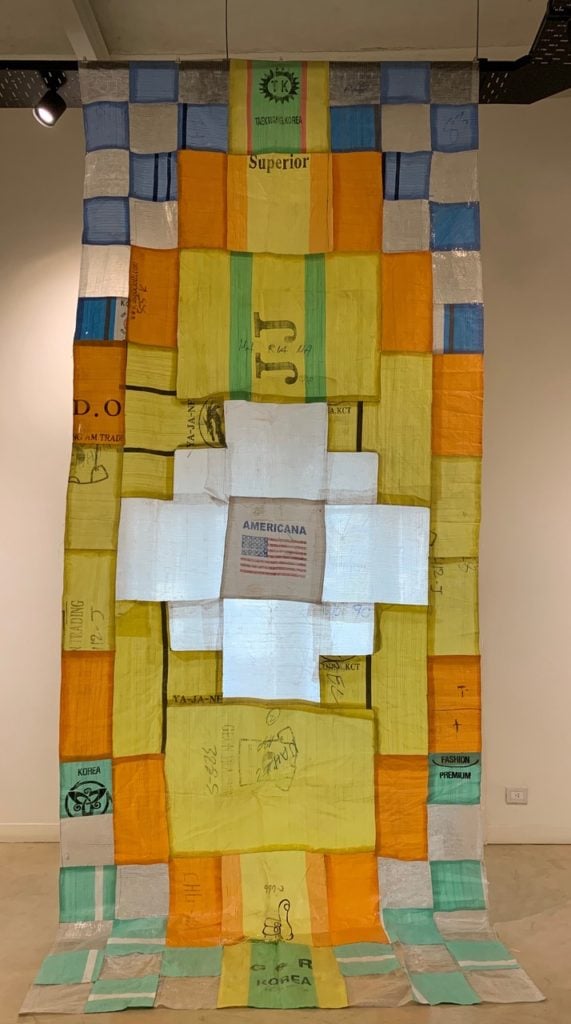
Candelaria Traverso, Tripartición (2019). Courtesy of Herlitzka + Faria.
Herlitzka + Faria, of Buenos Aires, is displaying several works by Candaleria Traverso, a young Argentinian artist concerned with global commerce especially as it moves through informal economies. She sews into large banners pieces of synthetic fabric that is used to bag up bundles of clothes that make a circuitous international journey from the First World, where they are exported to Asia for recycling before winding up with street vendors in Latin America; central to each abstract banner is the geometry of an Inca-style stepped pyramid.
“ArtBo is doing a great job of increasing the Colombian collector base in a country that doesn’t have such a tradition of collecting,” said Henrique Faria, who has participated in most editions of ArtBo.
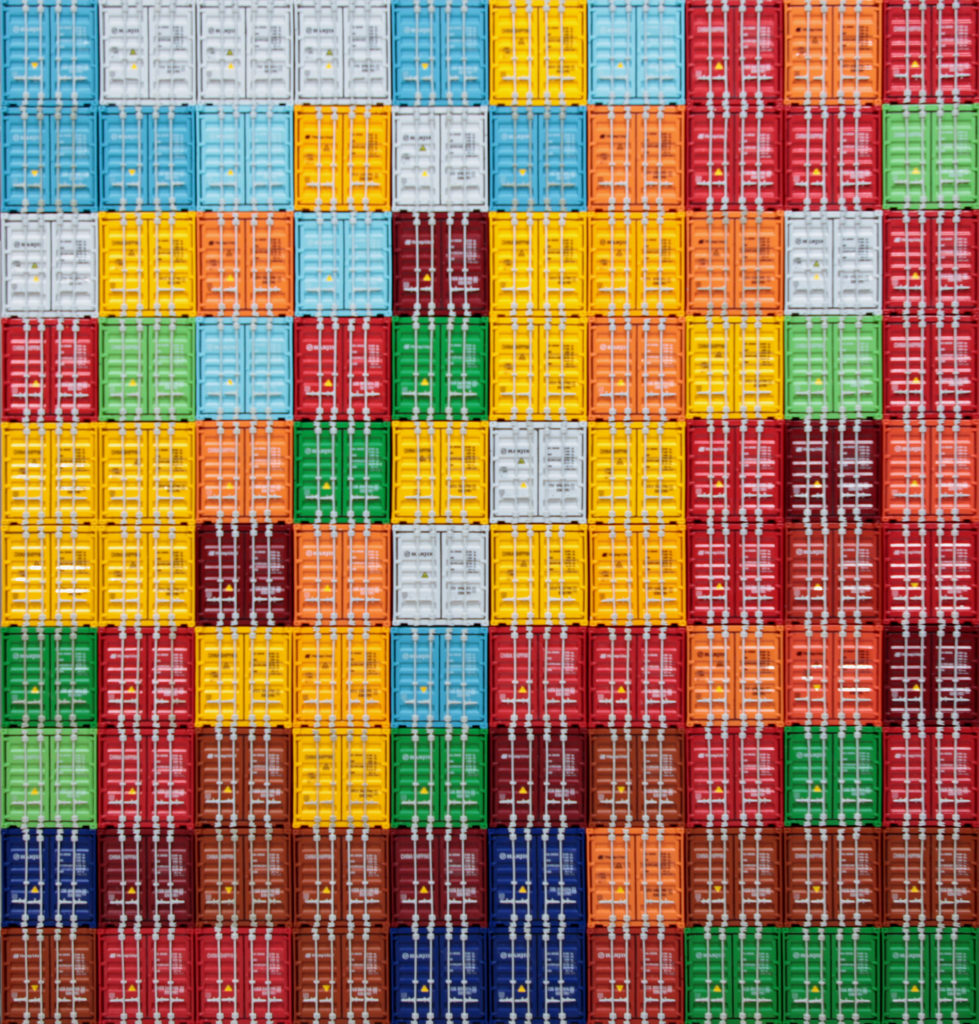
Alejandro Sánchez, Landscape II (2019). Courtesy of Galería La Cometa.
Alejandro Sánchez, an artist in his 30s, is showing wall-hung relief sculptures of tiny, molded resin shipping containers arranged in a grid, bringing international channels of trade into Minimalist order but with eye-candy colors, at Bogotá’s Galería La Cometa. Angela Espita, the gallery’s special projects manager, points out that such containers have harbored not only goods but also migrants coming to Latin America. The works are on offer for $6,500. By Thursday, the gallery had sold a half-dozen works by contemporary artists at up to $7,000, and one work for $20,000.

Installation view of Manuel Mendoza Sánchez works at Embajada’s booth. Courtesy of Embajada.
Art fairs can be exhausting, and visitors could do worse than to sit on the floor and relax with a cup of tea with artist Manuel Mendoza Sánchez. Embajada’s booth is lined with the artist’s very funny vases, which are covered with imagery on themes ranging from Michael Jordan to the popularization of yoga to albino animals. (By day’s end Thursday, Rivera had sold a handful of collages and a few vases at up to $2,200.) They’re inspired by the ancient function of similar ceramic vessels used to transport commodities as well as, through their decoration, to tell stories.
Over a spicy brew, the artist explained that tea appeals to him as an ancient commodity that may have been transported internationally in containers such as these as part of the earliest global trade. The drink went down smoothly as we sat at the center of a modern-day international bazaar.